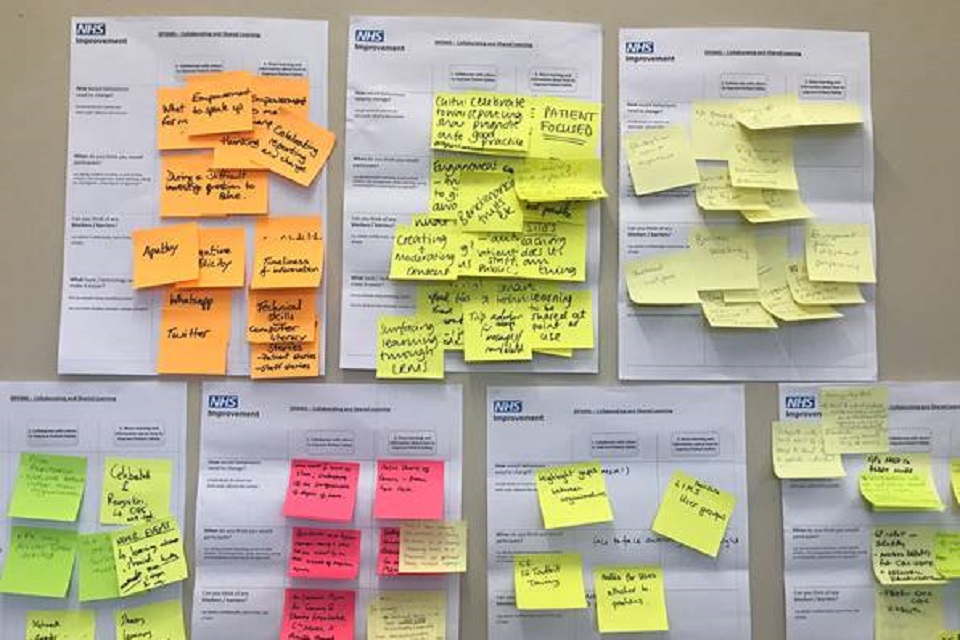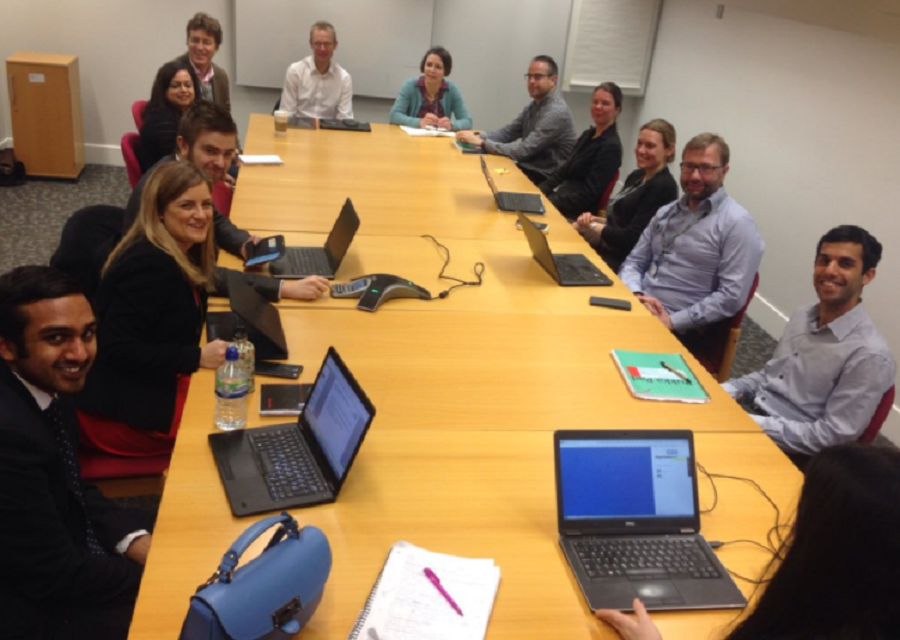I am what is affectionately known as a policy wonk in the Patient Safety team in NHS Improvement, and we’re working on an exciting new digital service to support better learning from patient safety incidents. The new service will replace the current National Reporting and Learning System (NRLS) and the even less popular Strategic Executive Information System (STEIS).
But our goal isn’t just a tech upgrade and like-for-like replacement – we want to support a transformation in the culture surrounding patient safety, from one of reactive reporting and counting, to being focused on helping our health care workers learn and improve.
To help us do this we are designing the new service in collaboration with users and working with the Government Digital Service and their Digital Service Standard. Since last November, we’ve been working through the alpha phase and I’ve been getting acquainted with my new role as product owner, and all things digital.

Going agile
This is our team’s first agile project and it has been quite a learning curve. Luckily, our delivery partner, Informed Solutions, has been helping us adjust. Agile feels very different from the more traditional policy- and project-management styles – it’s more collaborative, more responsive, and much faster-paced. To get us started, the Informed team ran a few sessions to introduce us to agile concepts, set us up with some collaboration tools, and tackled our endless questions.
Agile development helps us focus our work around users, describing everything we do in the form of a user story. I’ve been telling people for years that that this project has the best stakeholders in the world, and the level of support we’ve received from outside the team has been amazing. It’s exciting (and terrifying!) to think that the new service has the potential to benefit such a large user community across nearly every area of health care.
Users and us
To help us manage our user engagement, we started by grouping the potential user-base into 28 types (personas) and have worked extensively to get input from each of them during the alpha phase.
Asking health care workers to take time out away from their patients is never an easy task, so we’ve used a variety of techniques to reach people, including:
- 3 sets of targeted user surveys (including one for patients and the public), receiving over 1,300 respondents, partly promoted through Twitter
- remote usability testing (50 users)
- face-to-face usability testing (19 users)
- 2 day-long workshops (45 users)
What have we been talking to users about?
Our primary goal has been to make sure we understand how users see the world of patient safety, how it fits into their day-to-day work and world, and what they’d want from the system in terms of enabling learning and improvement. Over the past 3 months we’ve built a range of prototypes to explore what users are looking for in a digital service, including:
- online incident recording – we’ve built 5 different variations of web forms, testing them with a wide range of health care staff and members of the public
- 2-way information exchange with local risk management systems – we’ve been testing the electronic exchange of information (using APIs) between systems used within health care provider organisations, and our new national system
- work with users on the types of safety data they’d like to have access to, and how they’d like to be able to analyse it. Alongside this, we’ve been looking at ways to share the learning materials the Patient Safety team create through their regular review of recorded incidents, so that the right people can access them and start making patients safer
We think we’ve got a good idea of the overall user needs now, and over the next few weeks we’ll be setting out and sharing our plans for the beta phase.

Top tips for agile alpha advancement
My advice on this process for anyone who might be starting out:
- get ready for a lot of ‘ceremonies’. Within each 2-week sprint in this project we have 6 stand-ups, sprint planning, review and retrospectives, show and tells, and a governance meeting… You’ll get used to the pace, but I spent the first few sprints wondering when I was going to get any work done!
- get the right team. I am lucky to have some great colleagues from NHS Improvement working alongside me, and we’ve struck a really productive balance with our delivery partner in terms of team working, friendly challenge, knowledge and skills exchange, and the all-important 'getting stuff done'
- learn the language: my undergraduate degree was in anthropology, and as any great explorer of worlds will tell you, the key to a good adventure is to immerse yourself in the culture. You’ll quickly find yourself ‘opening tickets’, agreeing ‘epics’, ‘assigning story points’ (which – fun fact – follow the Fibonacci sequence), ‘iterating’ everything, and even ‘grooming the backlog’ (ooh Matron!)
- arm yourself with as many post-it notes as you can find – they are the most powerful weapon in your agile arsenal!
What’s next?
With huge sighs of relief from all involved, I’m happy to say we passed our GDS Service Assessment for the alpha phase at the end of March, and so will next get cracking on building a full-feature service for our users. We’ve built up some real momentum in alpha and learned lots from our users and by prototyping. We’re all excited to see where the beta phase takes us!
Get involved
If you’d like to learn more about this project, or to get involved, email DPSIMS-stakeholders@nhs.net so we can add you to the mailing list, or follow me on Twitter for sneak peeks of what we’re up to.